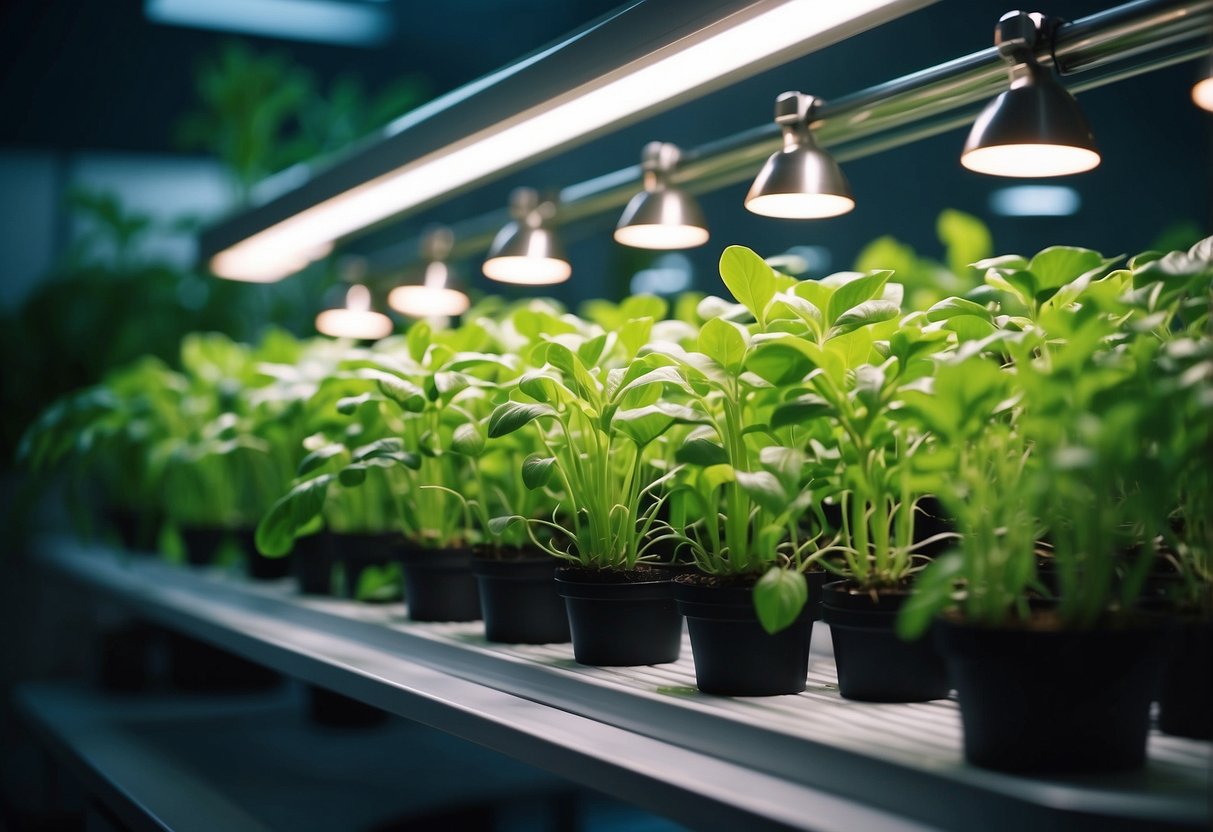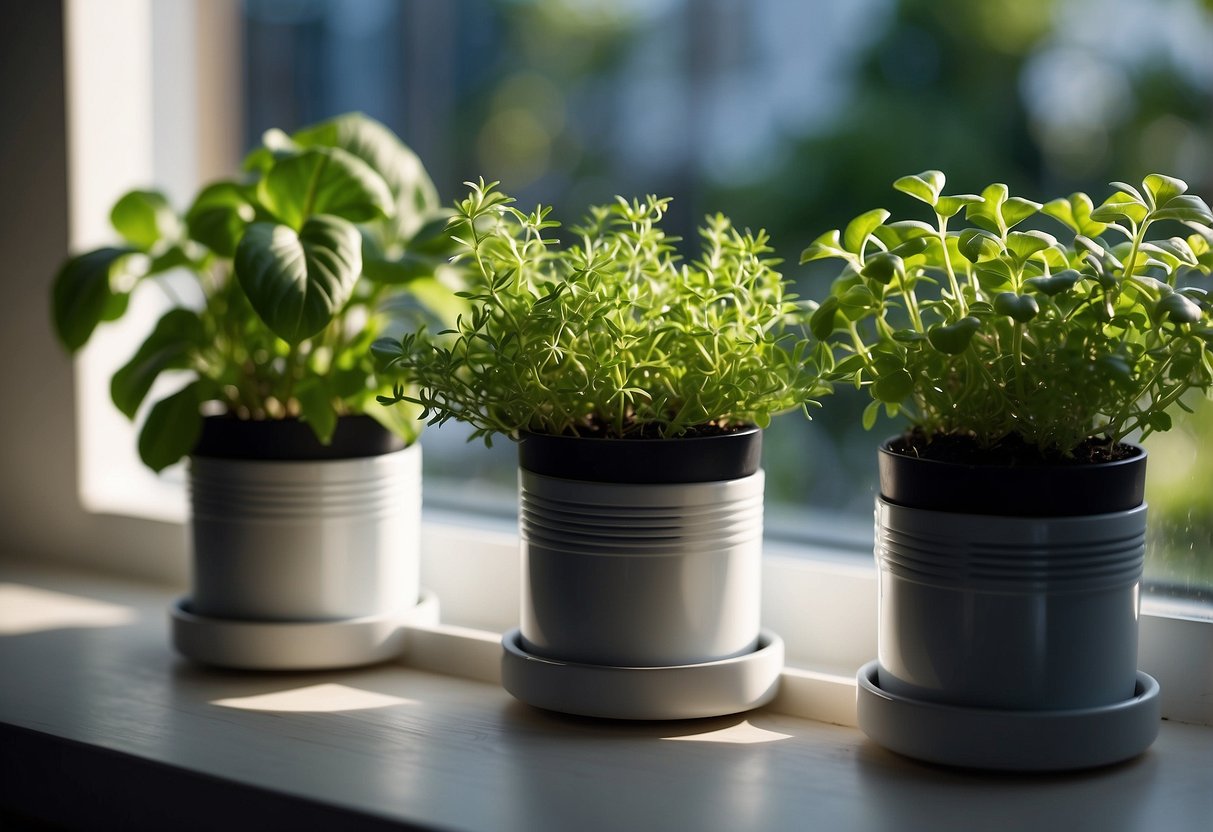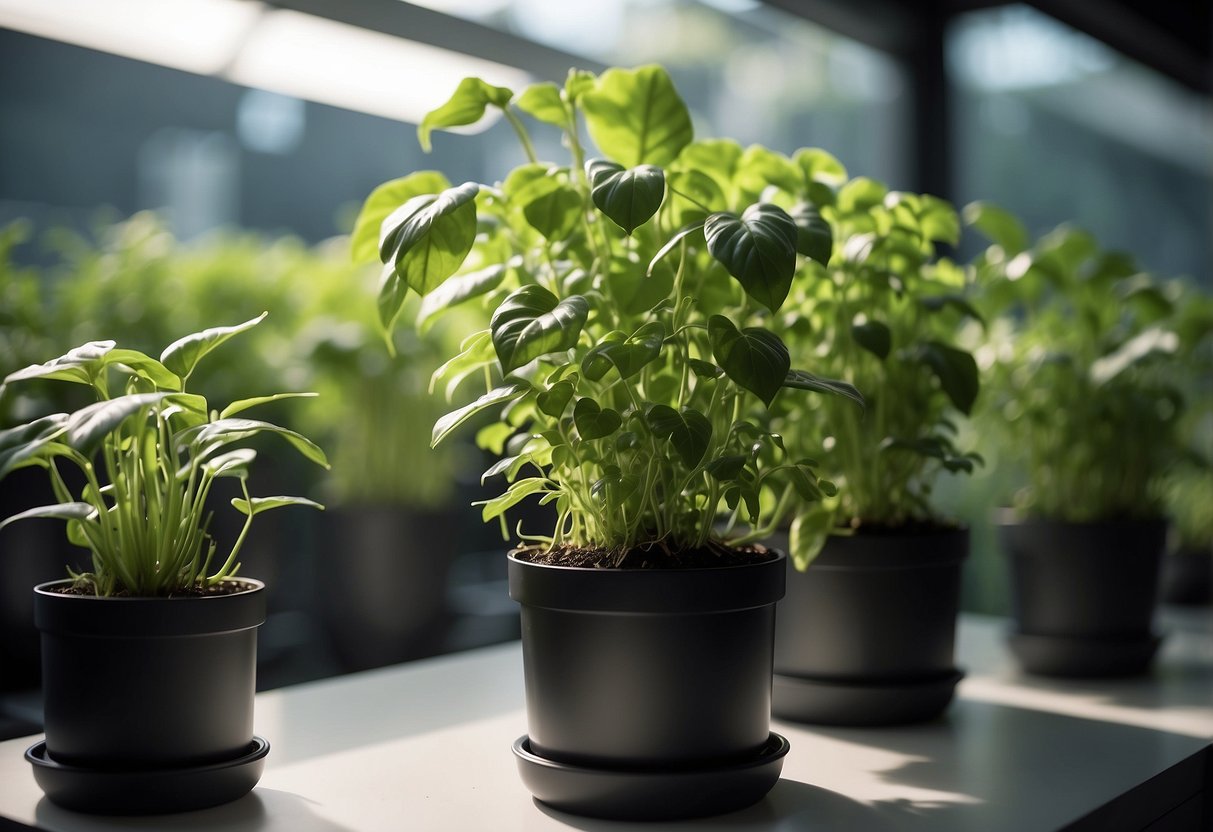Hydroponic Garden Ideas: Simple Tips for Indoor Gardening
Hydroponic gardening is an exciting way to grow plants without soil, using a nutrient-rich water solution. It’s perfect for people who want to garden indoors or have limited outdoor space. You can grow a variety of crops, from delicious fruits to leafy greens.

Why consider a hydroponic garden? It lets you control the growing environment, leading to faster growth and higher yields. Whether you’re a beginner or an experienced gardener, there are plenty of creative and effective hydroponic garden ideas to explore.
1) Vertical Hydroponic Tower

A vertical hydroponic tower is a great option for growing plants in small spaces. It’s perfect for apartments or urban homes where space is limited.
These towers are designed to grow multiple plants in a vertical stack. Each level can hold a plant, allowing you to grow many plants in a small footprint.
Using a vertical hydroponic tower, you can grow fresh vegetables, herbs, and even some fruits. It’s a convenient way to have a garden right in your home.
If you need inspiration, check out these DIY hydroponic vertical garden ideas.
2) Herb Window Garden Kit

You can grow herbs right on your windowsill with a herb window garden kit. These kits are great for small spaces and bring fresh flavors to your cooking.
Some kits even use self-watering pots, so you don’t have to worry about overwatering. Try using DIY kitchen herb garden setups with tea tins or tin cans for a creative touch.
3) LED Grow Light System

Using LED grow lights in your hydroponic garden can make a big difference. They are energy-efficient and produce less heat than other lights.
LED lights come in various sizes and intensities. You can customize them to fit your garden’s needs.
For more details on choosing the right LED lights, check out this Beginner’s Guide to Hydroponic Gardening With LED Lights.
4) Nutrient Film Technique Setup

To set up the Nutrient Film Technique (NFT) in your hydroponic garden, start with a sloped growing channel. This is where your plants’ roots will hang. Next, install a pump to move the nutrient solution to the top of the channel. The thin film of nutrient-rich water will flow over the roots and then return to the reservoir.
Use net pots to hold your plants in place. They allow roots to grow down into the nutrient flow. Make sure your reservoir is large enough to hold and recirculate the nutrient solution. Regularly check your system to ensure the pump is working well, and the water flow is smooth.
The NFT system works best for small, fast-growing plants like lettuce and herbs. For more detailed instructions, you can visit this comprehensive guide.
5) Deep Water Culture System

In a Deep Water Culture (DWC) system, your plants’ roots are suspended directly in a nutrient-rich solution. This method ensures that your plants get all the water and nutrients they need to grow.
DWC is simple and efficient, making it ideal for beginners. You won’t need soil, and you can see faster growth and larger yields. If you’re looking for an easy hydroponic method, Deep Water Culture is a great start.
6) Drip System Garden

A drip system garden is a popular choice for hydroponic growers. This system uses a network of tubes and emitters to deliver water and nutrients directly to the plant roots.
You can use a blend of perlite, coconut coir, or peat along with vermiculite as the growing medium. This mix ensures good water retention and drainage.
Drip systems are efficient and space-saving, perfect for indoor gardening. To get started, check out this step-by-step guide for setting up your own drip system garden.
7) Aquaponic Combo

Combining aquaponics with your hydroponic garden adds a sustainable touch. In an aquaponic system, fish and plants work together. The fish waste provides nutrients for the plants, and the plants help clean the water for the fish.
This cycle creates a balanced, eco-friendly garden. You can grow fresh vegetables and raise fish in the same system. Many people find this method efficient and rewarding.
Setting up an aquaponic garden might seem complex, but it’s worth it. You can get started with a simple setup, like a tabletop system. For ideas, check out these DIY aquaponic plans.
8) Aeroponic Garden Kit

An aeroponic garden kit is a fun and efficient way to grow plants without soil. You can easily set up one in your home.
The kit includes key components like PVC pipes, net pots, a water pump, and a sprinkler head. These work together to spray nutrient-rich water directly onto the plant roots.
This system keeps roots well-oxygenated and healthy. It’s also space-efficient, making it great for small spaces. You can grow a variety of plants, including herbs and vegetables.
With an aeroponic garden kit, gardening becomes a simple and enjoyable experience.
9) Self-Watering Microgreens Tray

A self-watering microgreens tray is a great way to grow fresh greens indoors with minimal effort. You can make one using simple materials.
Use a plastic tray and place a Styrofoam layer inside, ensuring there’s about an inch of space on all sides. Cut wool to fit over the Styrofoam, leaving enough to hang down and absorb water.
Fasten the wool to the Styrofoam with nails or tacks. Place this setup in the tray with the wool side up. This design ensures that your microgreens get constant moisture, making it easy to maintain a healthy, thriving garden.
For more information, check out this detailed guide.
10) Hydroponic Cloning Machine

Using a hydroponic cloning machine can make your gardening life easier. These machines provide a perfect environment for plant cuttings to root and grow.
You place cuttings into the machine, which keeps them in nutrient-rich water. This way, the cuttings get all the nutrients they need without soil.
Machines like the Clone King have high success rates and can even save you time.
Benefits of Hydroponic Gardening

Hydroponic gardening offers many advantages, including efficient water usage, effective space utilization, and faster plant growth. These benefits make hydroponic systems an appealing option for gardeners.
Conservation of Water
In a hydroponic system, plants grow without soil, using water mixed with nutrients. This method uses up to 90% less water than traditional soil gardening. Water is recycled through the system, so there’s very little waste.
In traditional gardens, a lot of water is lost due to evaporation and excess drainage. In hydroponics, every drop of water is used and reused. This efficient use of water is good for the environment and can help you save on water bills. It’s especially useful in areas prone to drought or where water availability is limited.
Space Utilization
Hydroponic systems allow plants to grow closer together than in traditional gardens. Without the need for soil, you can place plants in vertical stacks or other compact arrangements. This is great if you have limited space, like in an apartment or urban setting.
By optimizing the growing area, you can grow more plants in less space. This increases yield per square meter and makes the most out of your available area. Vertical farming systems, grow towers, and stacked planter designs are all possible with hydroponic setups.
Faster Plant Growth
Plants in hydroponic systems tend to grow faster than those in soil. The roots have direct access to nutrients and oxygen, enabling quicker and more efficient uptake. Temperature control and constant access to water also contribute to healthier and faster-growing plants.
You can expect to see a quicker turnaround from planting to harvest. Some studies show that hydroponic plants can grow up to 50% faster. This speedy growth is a major advantage if you want to maximize productivity, whether for personal use or small-scale commercial farming.
Hydroponics can grow plants all year round, unaffected by seasonal changes, leading to continuous and predictable crop production.
Types of Hydroponic Systems

Hydroponic systems are a great way to grow plants without soil. Each system works differently to provide water and nutrients to your plants in an efficient manner.
Nutrient Film Technique (NFT)
In the Nutrient Film Technique (NFT), a thin layer of nutrient-rich water flows over the plant roots. This system is great for small plants like lettuce and herbs.
You’ll need a slightly tilted growing tube to allow the water to flow. The nutrient solution is pumped to the higher end of the tube and flows down to the lower end. This provides nutrients and oxygen to the roots.
NFT systems are compact and space-efficient. However, they require a reliable power source to keep the water moving, as roots can dry out quickly if the pump fails. Check out more about NFT systems at Hydrobuilder Learning Center.
Deep Water Culture (DWC)
Deep Water Culture (DWC) is one of the simplest and most popular hydroponic systems. The plant roots are suspended in a nutrient solution, getting constant access to water, nutrients, and oxygen.
In a DWC system, you’ll use a reservoir to hold the nutrient solution. An air pump and air stone are used to oxygenate the water, which keeps roots healthy and encourages growth. Plants can grow faster and larger in a DWC system because they have direct access to the nutrients they need. Learn more about DWC systems at Epic Gardening’s guide.
Wick Systems
The Wick System is the simplest type of hydroponic setup. It uses a wick to draw nutrient solution from a reservoir to the plant roots.
To set up a wick system, you’ll need a growing tray and a reservoir. The wick, often made of rope or felt, transports the nutrients to the plants. Wick systems are passive, requiring no pumps or moving parts, making them easy to set up and maintain.
While they work well for small plants and herbs, wick systems may not provide enough nutrients for larger plants. For more insights, refer to Hydrobuilder Learning Center.
Setting Up Your Hydroponic Garden

To create a thriving hydroponic garden, you need to focus on proper location, lighting, and balanced nutrient levels. These factors will ensure your plants grow healthy and strong.
Choosing the Right Location
Pick a spot that gets adequate natural light or where you can easily install grow lights. Avoid areas with extreme temperatures or direct drafts. The space should have good ventilation to keep the air fresh and promote plant health.
Make sure the location is easily accessible for maintenance tasks. This includes checking nutrient levels and cleaning equipment. A space with enough electrical outlets is essential for powering pumps, lights, and other equipment.
Selecting the Appropriate Lighting
Hydroponic gardens thrive under artificial lights if natural sunlight is limited. LED grow lights are energy-efficient and provide the full spectrum of light necessary for plant growth. Make sure your lights are set on a timer to mimic natural day and night cycles.
Fluorescent lights are another option, especially for smaller setups. They are affordable and good for leafy greens and herbs. Place the lights close to the plants but not touching them to avoid heat damage. Regularly check and adjust the light’s position as plants grow.
Maintaining Nutrient Levels
Nutrient balance is crucial for hydroponic gardens. Use a quality liquid nutrient solution specifically designed for hydroponics. This ensures you have the right mix of nitrogen, phosphorus, potassium, and trace minerals.
Check the pH level of your water regularly, keeping it between 5.7 and 6.3. A digital pH meter is a handy tool for this. Remember to change the nutrient solution every two to three weeks to prevent buildup and ensure fresh nutrients are always available to your plants.







